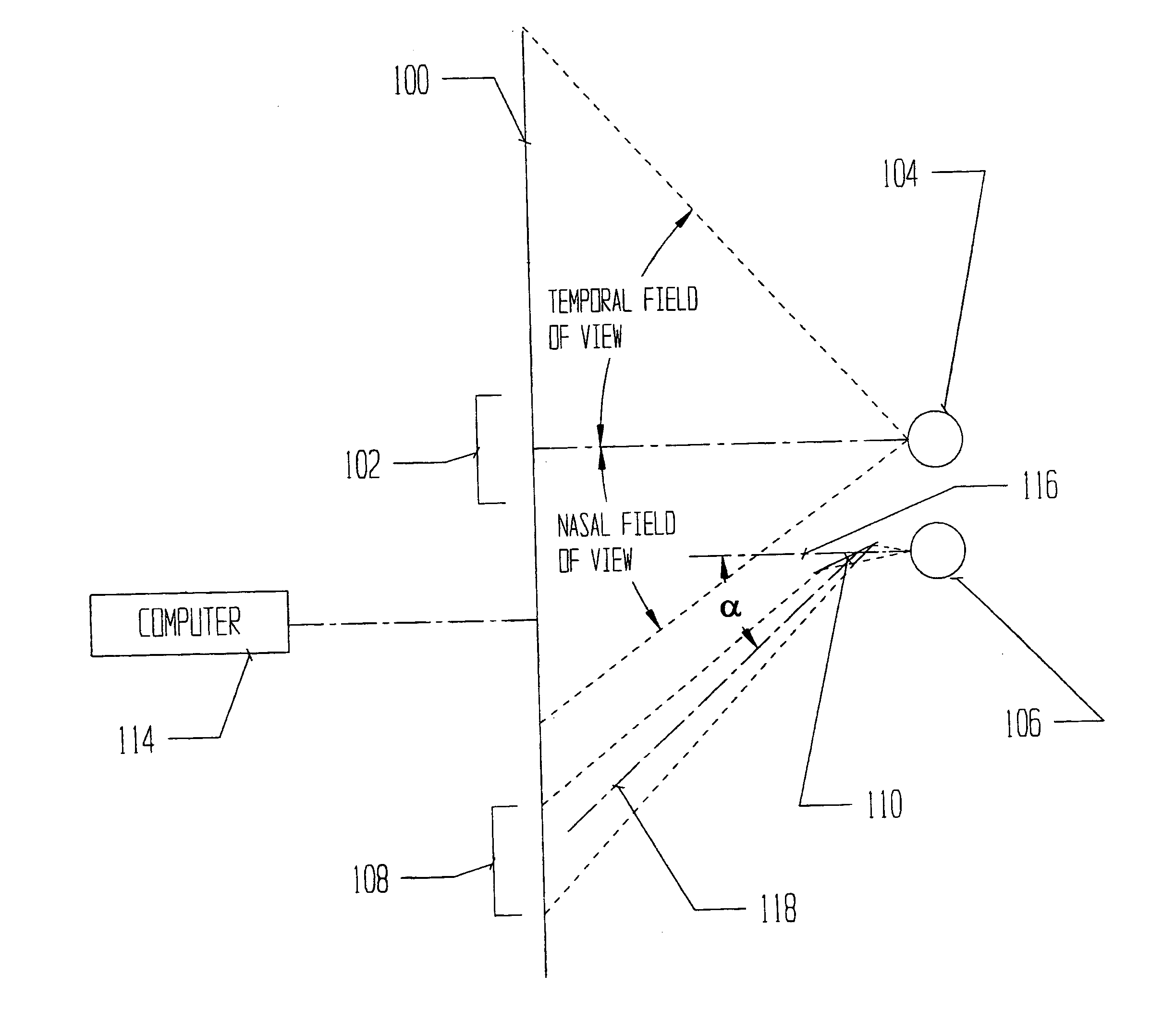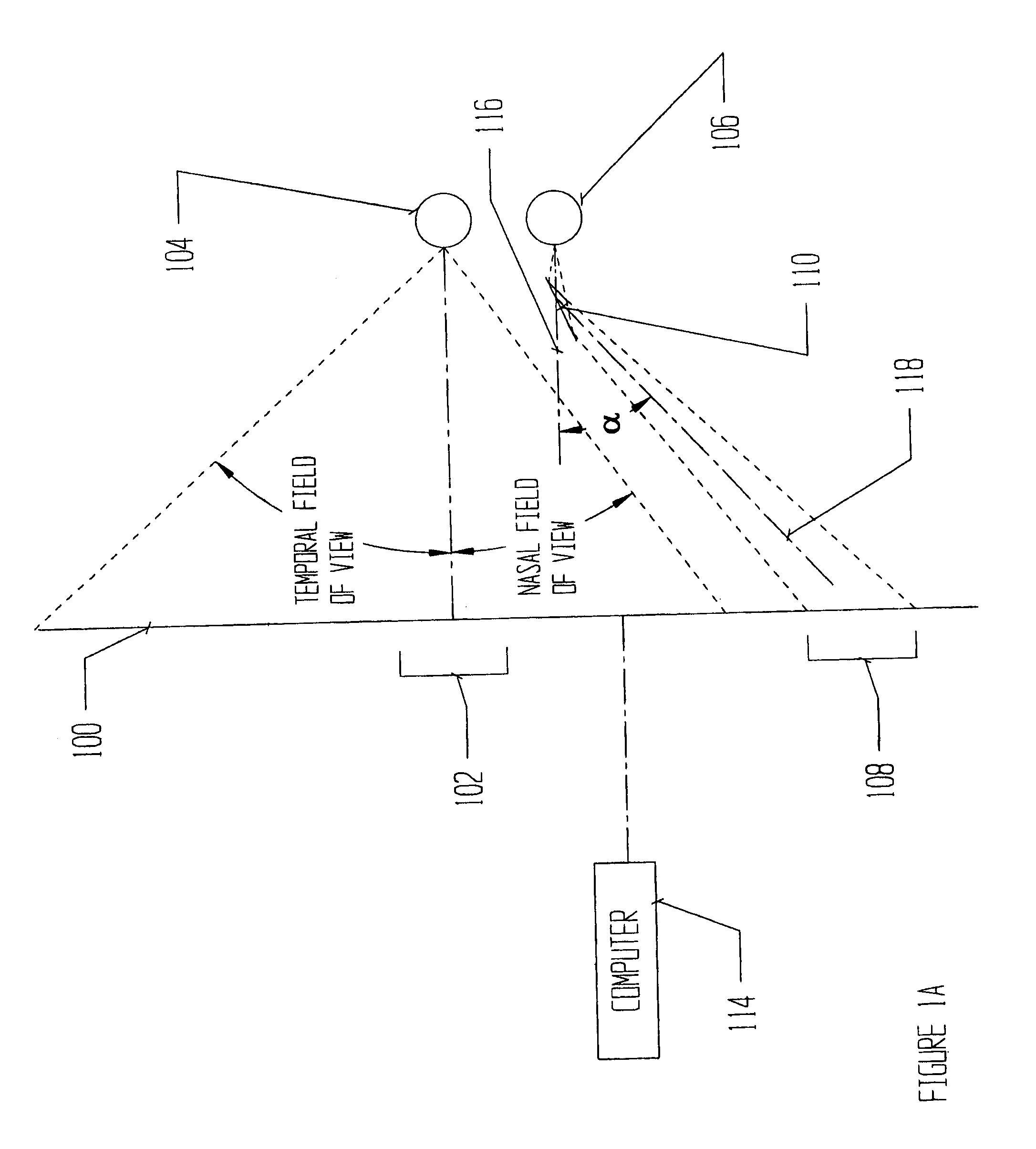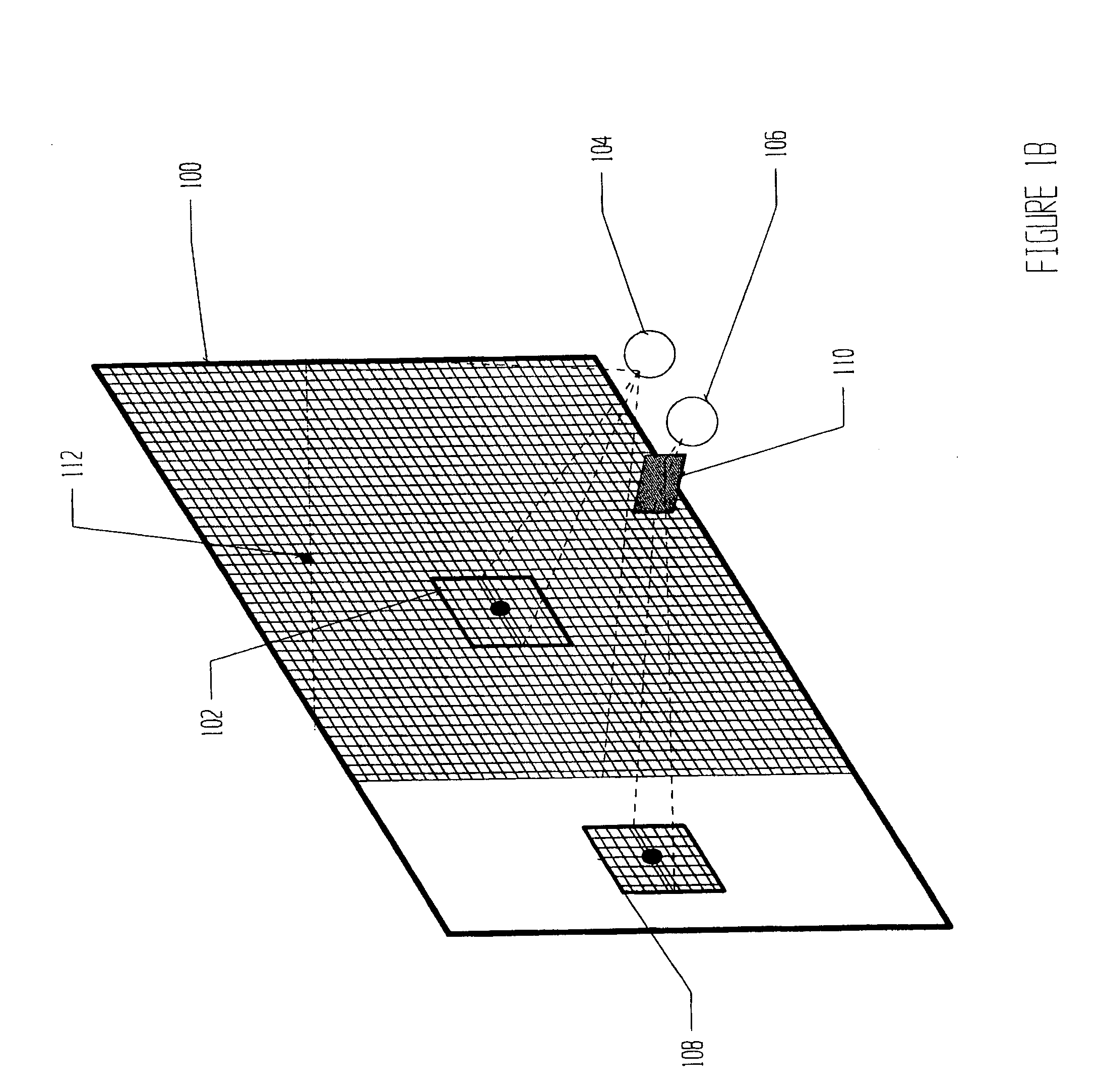Automated stereocampimeter and related method for improved measurement of the visual field
a stereocampimeter and visual field technology, applied in the field of methods, can solve the problems of no equipment routinely used no equipment designed for the study of the field, and reduced vision sensitivity, so as to improve the accuracy and rapidity of scotoma measurement, improve the accuracy of scotoma measurement, and reduce fatigue
- Summary
- Abstract
- Description
- Claims
- Application Information
AI Technical Summary
Benefits of technology
Problems solved by technology
Method used
Image
Examples
Embodiment Construction
[0060]The invention will now be described in more detail by way of example with reference to the embodiments shown in the accompanying figures. It should be kept in mind that the following described embodiment in only presented by way of example and should not be construed as limiting the inventive concept to any particular physical configuration.
[0061]A preferred embodiment of the present invention is depicted cross section in FIG. 1A and three-dimensionally in FIG. 1B. A computer display 100 is used to present a patient with a graphical fixation area 102, and flashing test points 112 throughout the central visual field (for example 30 degrees nasally and 50 degrees temporally) to the eye under test 104. The technique described herein could certainly be extended to include the entire field of view of the eye as perimeters do, but will be described here only in the campimeter form. The computer display also serves to present to the eye not under test 106, a fixation area 108 that fu...
PUM
 Login to View More
Login to View More Abstract
Description
Claims
Application Information
 Login to View More
Login to View More - R&D
- Intellectual Property
- Life Sciences
- Materials
- Tech Scout
- Unparalleled Data Quality
- Higher Quality Content
- 60% Fewer Hallucinations
Browse by: Latest US Patents, China's latest patents, Technical Efficacy Thesaurus, Application Domain, Technology Topic, Popular Technical Reports.
© 2025 PatSnap. All rights reserved.Legal|Privacy policy|Modern Slavery Act Transparency Statement|Sitemap|About US| Contact US: help@patsnap.com



